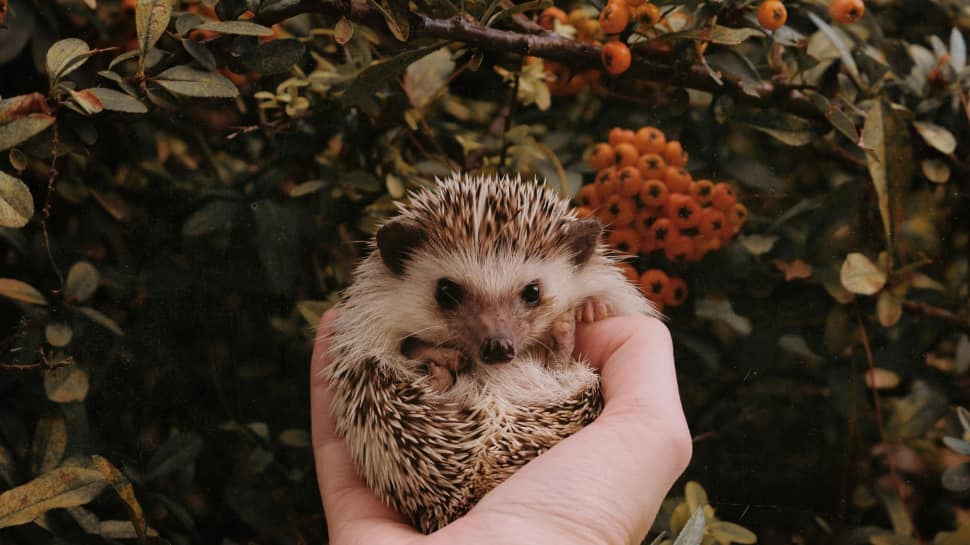When we think of hibernation, winter usually comes to mind as animals tuck themselves away to escape the cold. However, some animals also hibernate during the summer months to avoid extreme heat and scarcity of food and water—a process called estivation. Estivation allows these creatures to conserve energy and stay cool in their habitats. Here are some fascinating animals that hibernate in summer to survive the sweltering heat:
The Savvy Snail
Snails are masters of survival in hot, dry conditions. When faced with scorching temperatures, many species of snails, such as the garden snail, retreat into their shells and seal the opening with a layer of mucus, known as an epiphragm. This barrier helps them retain moisture and protects them from the heat. During estivation, snails slow their metabolism, remaining inactive until cooler, wetter conditions return.
The Secretive Salamander
Amphibians, like the tiger salamander, are particularly vulnerable to heat because their skin needs to remain moist for them to survive. To escape the harsh conditions of summer, salamanders burrow underground or hide in moist, shaded areas where they can stay cool. In these hidden retreats, they go into a state of dormancy until the weather becomes more favourable, conserving energy and avoiding dehydration.
The Brilliant Beetle
Certain beetles, like the desert beetle, employ a range of survival techniques, including estivation. These beetles may burrow deep into the sand or soil, where temperatures are cooler and moisture is more accessible. By entering a dormant state, beetles reduce their activity and metabolic rate, allowing them to survive periods of intense heat and drought without needing food or water.
The Speedy Mouse
Small mammals like the kangaroo mouse are well-adapted to desert environments, but even they need a break from the extreme heat. During the hottest months, these rodents go into a state of estivation, often seeking refuge in underground burrows. Here, they can regulate their body temperature and reduce their need for food and water. When conditions improve, the mouse emerges, ready to forage and continue its daily activities.
The Lonesome Hedgehog
Hedgehogs are more commonly associated with winter hibernation, but some species, such as the desert hedgehog, also estivate during summer. When temperatures soar, hedgehogs retreat to cooler underground dens, where they curl up and enter a state of dormancy. Their metabolism slows dramatically, allowing them to conserve energy and water until the intense heat subsides.
The Fragile Frog
Frogs, like the green tree frog, are particularly vulnerable to extreme heat due to their permeable skin, which can easily dry out. To avoid this, many frogs burrow into the mud or hide in crevices to keep cool during hot months. Some frogs, such as the Australian burrowing frog, can even estivate for months, emerging only when rain returns, signalling the end of their summer dormancy.
The Self-Sufficient Lungfish
The African lungfish takes estivation to a whole new level. Found in seasonal rivers and ponds that dry up during the summer, the lungfish burrows into the mud and secretes a protective cocoon around its body. Inside this cocoon, it enters a deep state of dormancy, surviving for months without food or water. Remarkably, the lungfish can survive in this state for up to four years, waiting for water to return.
The Talented Tortoise
Desert-dwelling tortoises, such as the Gopher tortoise, estivate during the hottest parts of the year to avoid the blistering heat of the sun. These tortoises dig deep burrows that provide cool, shaded shelter. While estivating, tortoises dramatically reduce their activity levels and food intake, relying on their stored body fat to survive until the temperatures drop and food becomes more plentiful.
Estivation is a vital survival strategy for animals living in environments where summer heat can be deadly. From snails and salamanders to lungfish and tortoises, these animals have adapted to thrive in some of the harshest conditions on Earth. By entering a state of dormancy, they conserve energy, avoid dehydration, and emerge once the climate is more favorable, showcasing the remarkable resilience of nature.
















